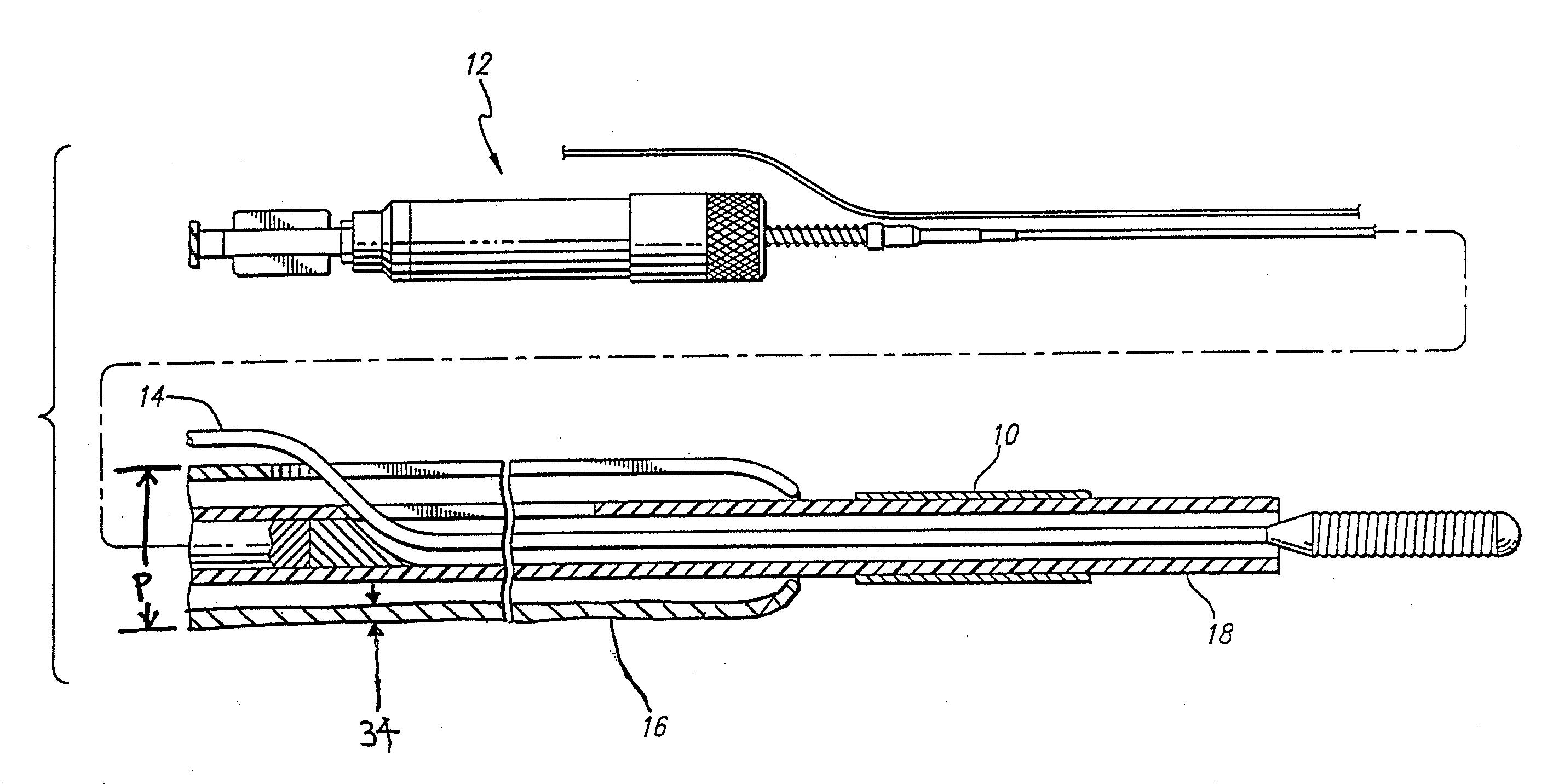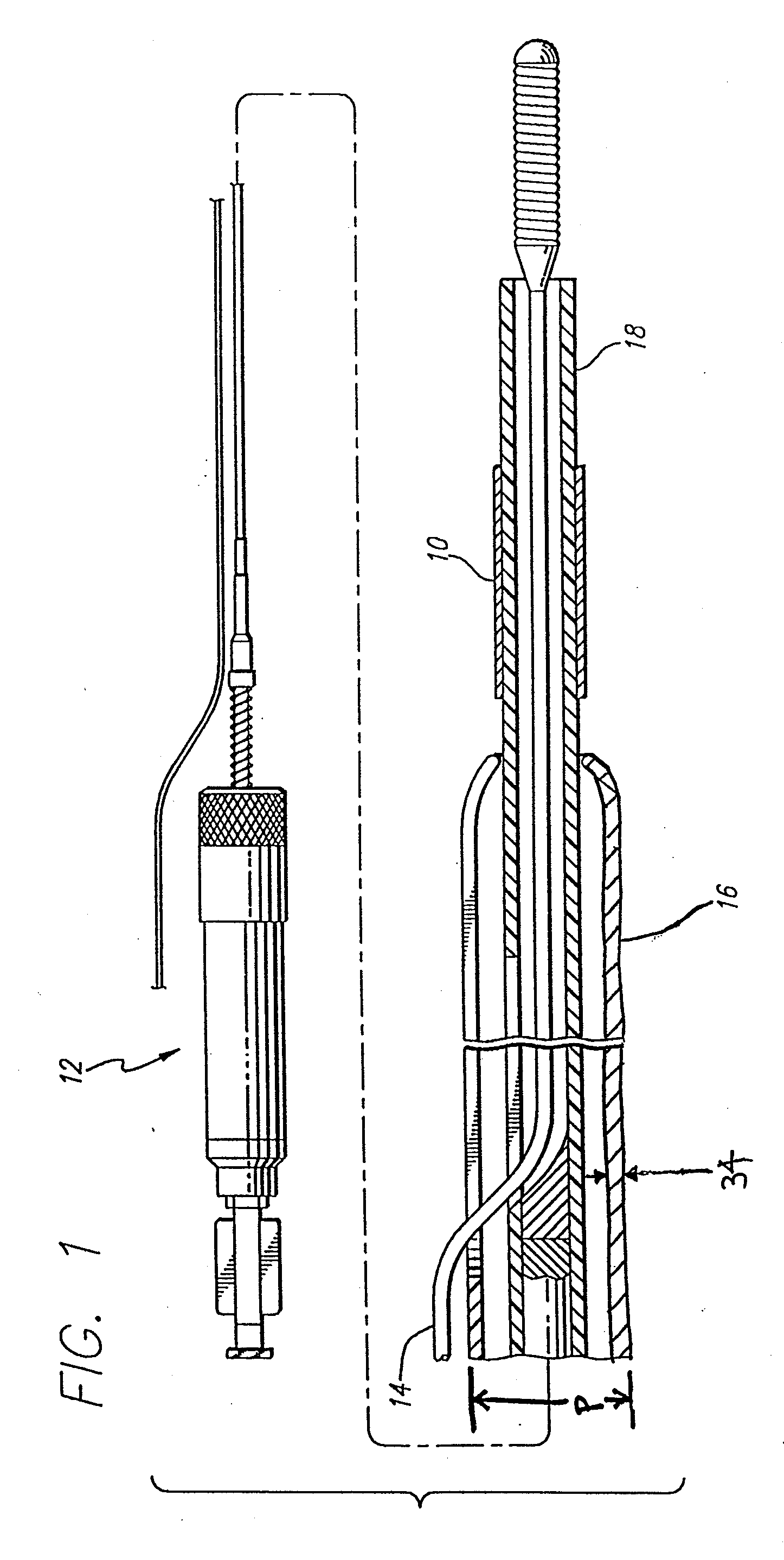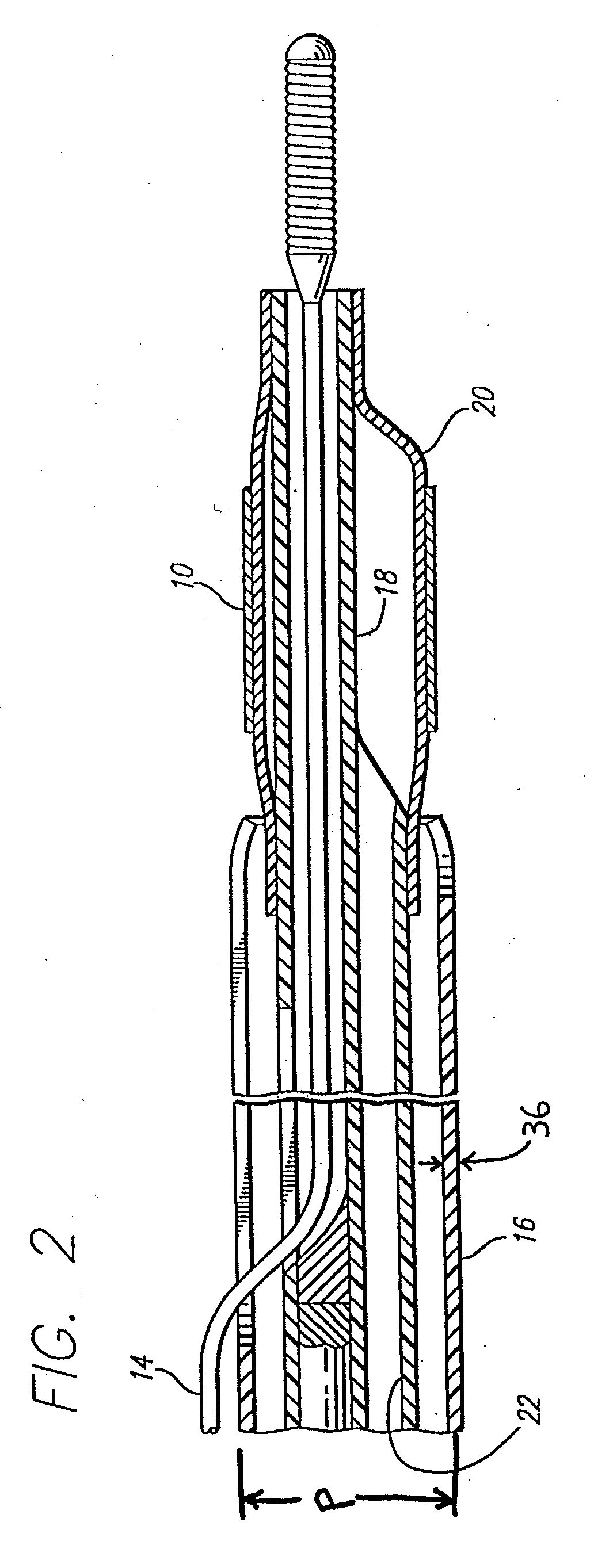Nitinol alloy design and composition for vascular stents
a vascular stent and nitinol alloy technology, applied in the field of self-expanding intraluminal vascular grafts, can solve the problems of affecting the hysteresis of the stent, so as to achieve wide hysteresis, wide hysteresis of th
- Summary
- Abstract
- Description
- Claims
- Application Information
AI Technical Summary
Benefits of technology
Problems solved by technology
Method used
Image
Examples
Embodiment Construction
[0023]During PTCA procedures it is common to use a dilation catheter to expand a diseased area to open the patient's lumen so that blood freely flows. Despite the beneficial aspects of PTCA procedures and its widespread and accepted use, it has several drawbacks, including the possible development of restenosis and perhaps acute thrombosis and sub-acute closure. This recurrent stenosis has been estimated to occur in seventeen to fifty percent of patients despite the initial PTCA procedure being successful. Restenosis is a complex and not fully understood biological response to injury of a vessel which results in chronic hyperplasia of the neointima. This neonintimal hyperplasia is activated by growth factors which are released in response to injury. Acute thrombosis is also a result of vascular injury and requires systemic antithrombotic drugs and possibly thrombolytics as well. This therapy can increase bleeding complications at the catheter insertion site and may result in a longe...
PUM
| Property | Measurement | Unit |
|---|---|---|
| stress hysteresis | aaaaa | aaaaa |
| superelastic | aaaaa | aaaaa |
| stress | aaaaa | aaaaa |
Abstract
Description
Claims
Application Information
 Login to View More
Login to View More - R&D
- Intellectual Property
- Life Sciences
- Materials
- Tech Scout
- Unparalleled Data Quality
- Higher Quality Content
- 60% Fewer Hallucinations
Browse by: Latest US Patents, China's latest patents, Technical Efficacy Thesaurus, Application Domain, Technology Topic, Popular Technical Reports.
© 2025 PatSnap. All rights reserved.Legal|Privacy policy|Modern Slavery Act Transparency Statement|Sitemap|About US| Contact US: help@patsnap.com



